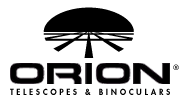{"closeOnBackgroundClick":true,"bindings":{"bind0":{"fn":"function(){$.fnProxy(arguments,\'#headerOverlay\',OverlayWidget.show,\'OverlayWidget.show\');}","type":"quicklookselected","element":".ql-thumbnail .Quicklook .trigger"}},"effectOnShowSpeed":"1200","dragByBody":false,"dragByHandle":true,"effectOnHide":"fade","effectOnShow":"fade","cssSelector":"ql-thumbnail","effectOnHideSpeed":"1200","allowOffScreenOverlay":false,"effectOnShowOptions":"{}","effectOnHideOptions":"{}","widgetClass":"OverlayWidget","captureClicks":true,"onScreenPadding":10}
{"ensembleSEOTranslationTypes":"ensemble","widgetClass":"BreadcrumbWidget","productSEOTranslationTypes":"product","categorySEOTranslationTypes":"category|section,category,thumbnail","delimText":"","catalogSEOTranslationTypes":"catalog","showCatalog":false}

Why Buy From Orion
- 30 Day Money Back Guarantee
- Safe & Secure Shopping
- Next Day Shipping
- Easy Returns
- Sale Price Guarantee
- Free Technical Support
{"clickFunction":"function() {$(\'#_widget1717205952017\').widgetClass().scrollPrevious(\'#_widget1717205952017\');}","widgetClass":"ButtonWidget"}
|
{"clickFunction":"function() {$(\'#_widget1717205952017\').widgetClass().scrollNext(\'#_widget1717205952017\');}","widgetClass":"ButtonWidget"}
{"snapClosest":true,"bindings":{"bind0":{"fn":"function(event, pageNum) { PagedDataSetFilmstripLoaderWidget.loadPage(\'#relatedItems\', Math.floor(pageNum)); }","type":"scrollend","element":"#_widget1717205952017_trigger"}},"unitSize":230,"widgetClass":"SnapToScrollerWidget","scrollSpeed":500,"scrollAmount":1150,"afterScroll":"","animateScroll":"true","beforeScroll":"","direction":"vertical"}
{entityCount: 5}
{"emptyItemViewer":"<div class=\"image\"><!-- --></div><div class=\"info\"><div class=\"name\"><!-- --></div><div class=\"orionPrice\"><!-- --></div></div>","imageThreshold":5,"pages":10,"dataModel":{"imageWidth":90,"cacheEntitiesInRequest":false,"entityId":"133198","entityTypeId":"4","dataProviderWidget":"com.fry.ocpsdk.widget.catalog.dataproviders.RelatedItemsDataProviderWidget","imageHeight":90,"itemViewerWidget":"com.fry.starter.widget.viewers.ItemViewerWidget","direction":"vertical"},"pageSize":"4","widgetClass":"PagedDataSetFilmstripLoaderWidget","loadThreshold":1,"direction":"vertical"}
{"closeOnBackgroundClick":true,"bindings":{"bind1":{"fn":"function(event, startIndex, itemCount, newItems) { QuickLookWidget.assignEvents(newItems); $(\".Quicklook > .trigger\", newItems).bind(\"quicklookselected\", function(event, source, x, y) { OverlayWidget.show(\'#_widget1717205952042\', event, source, x, y); }); }","type":"itemsloaded","element":".PagedDataSetFilmstripLoader > .trigger"},"bind0":{"fn":"function(){$.fnProxy(arguments,\'#_widget1717205952042\',OverlayWidget.show,\'OverlayWidget.show\');}","type":"quicklookselected","element":".Quicklook > .trigger"}},"effectOnShowSpeed":"","dragByBody":false,"dragByHandle":true,"effectOnHide":"fade","effectOnShow":"fade","cssSelector":"ql-category","effectOnHideSpeed":"1200","allowOffScreenOverlay":false,"effectOnShowOptions":"{}","effectOnHideOptions":"{}","widgetClass":"OverlayWidget","captureClicks":true,"onScreenPadding":10}






Why Buy From Orion
- 30 Day Money Back Guarantee
- Safe & Secure Shopping
- Next Day Shipping
- Easy Returns
- Sale Price Guarantee
- Free Technical Support

Shop Our Catalogs
Check out our colorful catalog, filled with hundreds of quality products.
See our eCatalogsEmail Sign Up
- Get In Touch
- How to Contact Us
- 800-447-1001
- Binoculars.com
- © 2002- Orion Telescopes & Binoculars All rights reserved
- DMCA/Copyright
- Terms and Conditions
- Privacy & Security





About Binoculars.com
Binoculars.com is a division of Orion Telescopes & Binoculars. We offer binoculars for every viewing interest, including astronomical binoculars, compact binoculars, waterproof binoculars, birding binoculars, and sport and hunting binoculars. We offer several leading brands of binoculars, including Barska, Bushnell, Celestron, Leica, Meade, Nikon, Orion, Pentax, and Steiner.. Not sure how to choose a binocular? Orion's Binoculars Buying Guide is a great place to start.
About Orion Telescopes & Binoculars
Since 1975 Orion Telescopes & Binoculars has been offering outdoor optics for sale direct to customers. Now an employee-owned company, we pride ourselves on an unswerving commitment to best quality products, value and unmatched customer care. Our 100% satisfaction guarantee says it all. In addition to our quality binoculars, we are known for our telescopes, accessories, and astrophotography equipment. Because we sell direct, we can offer you tremendous value at a great price.
sales and new products.

 English USD
English USD






